Huron or Wyandot Mythology and Cosmogonic Myths
July 27, 2014 in Native American History
After having written of the New Madrid earthquake of 1811, Tecumseh, and the Native American prophecies, it comes to my mind that many people are not aware of the multitude of native peoples’ oral history histories when it comes to cosmogonic theories or creation myths. It should also not surprise anyone that virtually all indigenous peoples had a vast knowledge of basic astronomy, yet apparently it does. The studies and explanations of the origin of the universe, the solar system, and the earth moon system, have been handed down for generations in indigenous tribes on the American continent. Their native education in such matters began in early childhood. This fact alone should make Native American prophecies a little less mysterious.
It is well known that Tecumseh had an unusual education, mingled with white settlers, and traveled extensively. Certainly he owed some of his education due to the tutelage from Rebecca Galloway. It’s also been speculated that he must have had access to an almanac, which could be true in relationship to his prophecies of both the Great Earthquake of 1811 and the Great Comet of 1812. However, what’s not been talked about, is the role of Native American oral traditions and native knowledge of the natural world played in his prophecies. Tecumseh, the great leader of the Shawnee and the Tecumseh Confederacy, was not the only native leader who possessed great knowledge on such matters. The average white colonists and invaders, however, often didn’t possess the same education. Yet, even with shared knowledge of history, the versions of reality are tested in the telling of the same stories by different peoples. White settlers did not appreciate what they did not understand or ever heard. Their history and the history of native peoples merged at times, but there is a great divide in viewpoint of history and the temptation of revisionist views. Since recording history is akin to walking a tight rope over Niagara Falls, we’ve failed to bridge the gap of accepting alternative history of other cultures and understanding those differences.
As a direct descendant of Catherine Annennontak, daughter of Jeanne Otrihoandit and Nicolas Arendanki, all of which were Ouendat (aka Ouendanke, Huron, Wendake, or Wyandot), my family owes much to a certain Jesuit missionary priest and those who followed him, who faithfully recorded the history of the Huron/Wendake people starting in 1637. Father Paul Ragueneau, Society of Jesus, preserved both the oral history and many of the myths of the Huron Wendake tribes. Of great interest to this eventual Superior of the Huron mission in Quebec, were the beliefs, myths, and cosmogonic myths of his mission charges. He had been sent to Huron country in 1637. He arrived during very troubled times of epidemics, violence, horrific hardships, famine, wars, martyrdom, emigration and eventual resettlement of the Hurons. Back then, likeTecumseh, their elders, shamans, and chiefs learned first hand of their cosmogonic and etiological myths and passed them on. Only the priest and other lay people around him, took the trouble and had the ability to record many of them.
Father Paul Ragueneau was charged with the conversion to Catholicism of what the French viewed as savage peoples living in ignorance. In his writings, he quite readily acknowledged his respect for his converted flock and their heritage and his awe of their oral traditions and myths. Along with other Jesuit priests and laymen that would come after him, they would come to understand that traditional native people stories needed to be protected, recorded, and understood. He personally took great offense to some missionaries and settlers mixing too much in indian affairs. He mastered their language. He masterminded their escape and survival from the Iroquois, as they and the French escaped from St. Joseph’s Island to Quebec. In his recording of Huron traditions, he noted how some of the Huron disapproved of the French stories on the same subject of the creation of earth. Intolerance for another’s view point often went both ways.
“The elders of the country were assembled this winter for the election of the very celebrated Captain. They were accustomed, on such occasions, to relate the stories which they have learned regarding their ancestors, even those most remote – so that the young people, who were present and hear them, may preserve the memory thereof, and relate them in their turn when they shall have become old. They do this in order thus to transmit to posterity the history and the annals of the country – striving, by this means, to supply the lack of writing and of books, which they have not. They offer to the person from whom they desire to hear something, a little bundle of straws, a foot long, which serves them as counters for calculating the numbers, and for aiding the memory of those present – distributing in various lots of these same straws, according to the diversity of the things they relate.”
“The turn having come to a Christian old man, to tell what he knew, he begins to narrate the creation of the world, of the Angels, of the Demons, of Heaven and Earth, with a most sagacious reservation, which kept all those present in a state of expectancy; for he was far along in the matter, and still had not yet given the name of the one who had made this great masterpiece. When he came to name him, and to say that God, whom the Christians adores, was the Creator of the world, the eldest Captain of those present seizes the straws from his hands, imposes silence upon him, and tells him that he does wrong to relate the stories of the French, and not those of the Hurons. But he says, he is going to relate the pure truth, and how it has happened that the earth, which was submerged in the waters, has been pushed out of them by a certain tortoise of prodigious size, which sustains it and which serves it for support – without which the weight of the earth would again engulf it in the waters, and would cause in this world below a general desolation of all the human race.” — Father Paul Ragueneau, Society of Jesus.
THE ORIGIN OF THE PLEIADES
Here’s a look at one Huron/Wendake cosmological beliefs that revolves around the star cluster, Pleiades, found within the constellation of Taurus. This cluster is among the nearest star clusters to Earth and one of the most obvious to the naked eye in the night sky. The celestial entity has several meanings in different cultures and traditions. The Sioux, Blackfoot, Cheyenne, Hopi, Lakota, Nez Perce, Onondaga, Shasta, and the Cherokee all have quite different stories to tell than the Huron. Similarly, Homer, in the Iliad and Odyssey had his own story about Pleiades. Even, the Greeks made them the Seven Sisters who descended from Atlas and Pleione. Clearly, the pleiades are popular cosmogonic myths with mankind. The Hurons believed the constellation consisted of only six stars. This is the story Chief Nicolas Arendanki of the Bear Clan likely knew:
The Singing Maidens
“The Sun and his wife, the Moon, had many children. Among these were six little girls, the daughters of a single birth. They were beautiful, kind, gentle, and loving children. They were great favorites in all the heavens for they loved to go about and do good. In addition to their other accomplishments, they were the sweetest singers and the more tireless and graceful dancers in all the sky-land. They were called the Singing Maidens.
These sweet singers often looked down to this world. They had compassion on the Wyandots when game was scarce, when the corn was blasted, when famine threatened. One day they said to their father, the Sun:
“Let us go down to visit the Wyandots on the Great Island. We wish to sing and dance in that land.”
The Sun said in reply, to his daughters, the Singing Maidens:
“I forbid your going down to the Great Island to sing for man. Remain in your own house. Be content with the heavens.”
But when the Sun was gone to give light and heat to the Great Island, these Children of the Light, the Singing Maidens, went abroad. They looked down on the Great Island.
They saw the Wyandot villages almost concealed by the beautiful woods on the banks of the lake. The glittering waves rolled in upon the pebble-strewn beach. The blue waters reflected the autumn-colored woods. The gulls, geese, and swans floated at rest on the bosom of the lake, or soared lazily aloft. The great crane waded and fished among the water-lilies. Little children ran from the village down to the beaten shores. They were merry on the yellow sands. They swam and splashed in the brilliant waters. Mermaids were not more lovely than these simple children of the forest playing upon the shores of the lovely lake on the Great Island. This enchanting scene moved the Singing Maidens to ecstasy. They cried out:
“Here is a more beautiful land than can be found in the sky. Why should we be restrained from visiting it? Let us now go down and dance with those happy children, and sing among the beautiful trees on the shore of the bright lake.”
Then the Singing Maidens came down to the shining sands on the lakeshore. they sang for the happy children and danced upon rippling waters. The children were charmed with the Maidens. They clapped their hands. They sang for joy. They ran and danced along the wooded banks.
The music of the Maidens and the sounds of the merry making children floated through the great trees to the Wyandot villages. The people stood entranced. They said to each other: “What music is this? We have not heard before so lovely a song. Let us see who visits our children.” And they went to towards the lake shore.
When they saw the Singing Maidens, the Black Cloud of the Little Turtle overshadowed the land. The voice of Heh-noh, the Grandfather of the Wyandots, rolled over the lake in thunder tones. It was the Keeper of the Heavens come to carry up the truant Singing Maidens.
The Sun was very angry with his daughters for their disobedience. He said to them:
“I will give you a place so far away that you can never again visit the Great Island.”
Then he placed them in a distant circuit so far away in the land of the sky that their bright and shining faces can scarcely be seen. They look with love down to the land of man, where once they sang on the billowy lake and danced with happy children on the shining shore.
And the Indian mother says yet to her child in the calm and silent twilight, “Be quiet and sit here at my feet. Soon we shall hear the Singing Maidens as they dance among the leaves of the trees.”
Thinking upon that story, it seems that a likely connection in the myths of one this Huron tribe is that their children and subsequent generations, grew up remembering the stories while looking about and observing all that the earth and the universe had to offer them. One can’t help but wonder, if this natural connection is what’s often missing from the accounts of invading peoples who failed to incorporate a wonderment and appreciation for the earth and stars above them? Shawnee Tecumseh knew it. Father Ragueneau understood it. Have the elders of our modern world failed to teach our own children the stories that would keep them looking far beyond the myths of their childhood, and endeavor to be both life long stewards of earth and seekers of the science of the universe?

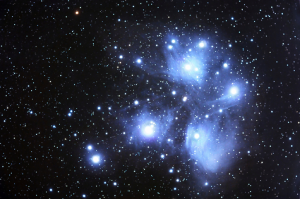
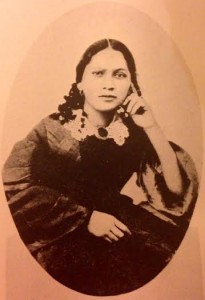
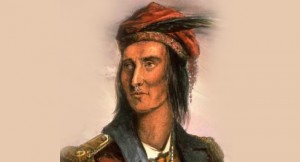
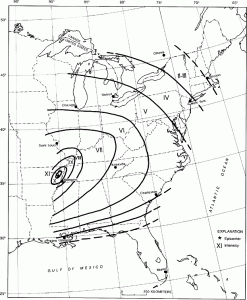
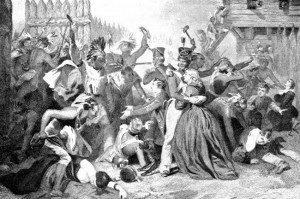
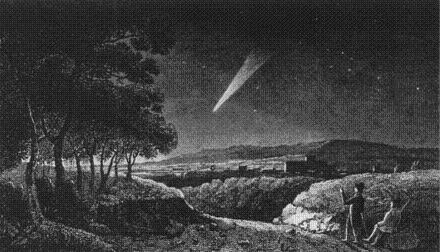
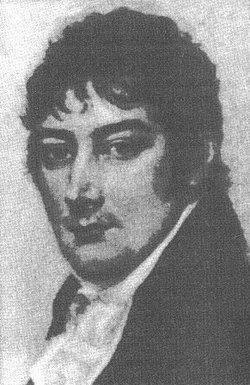
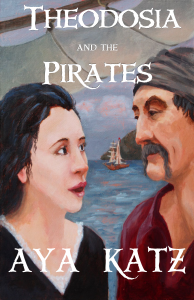
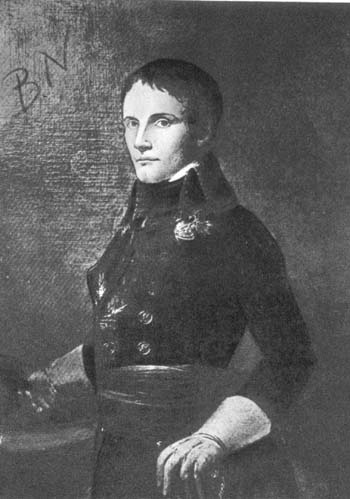
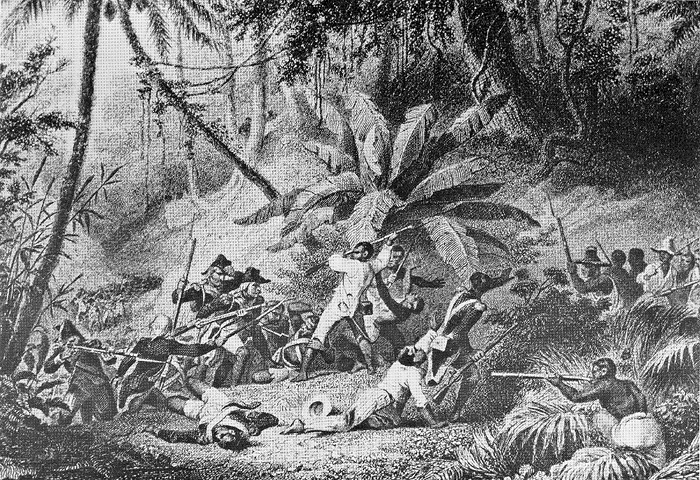
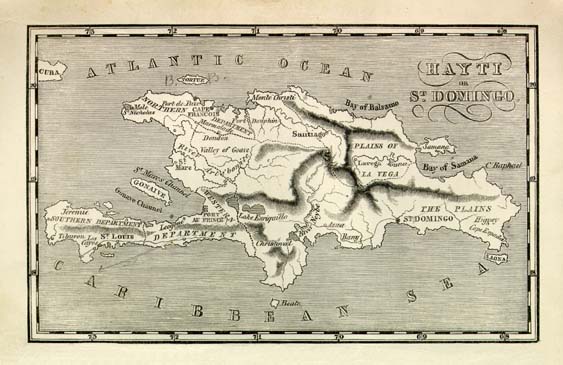
Recent Comments